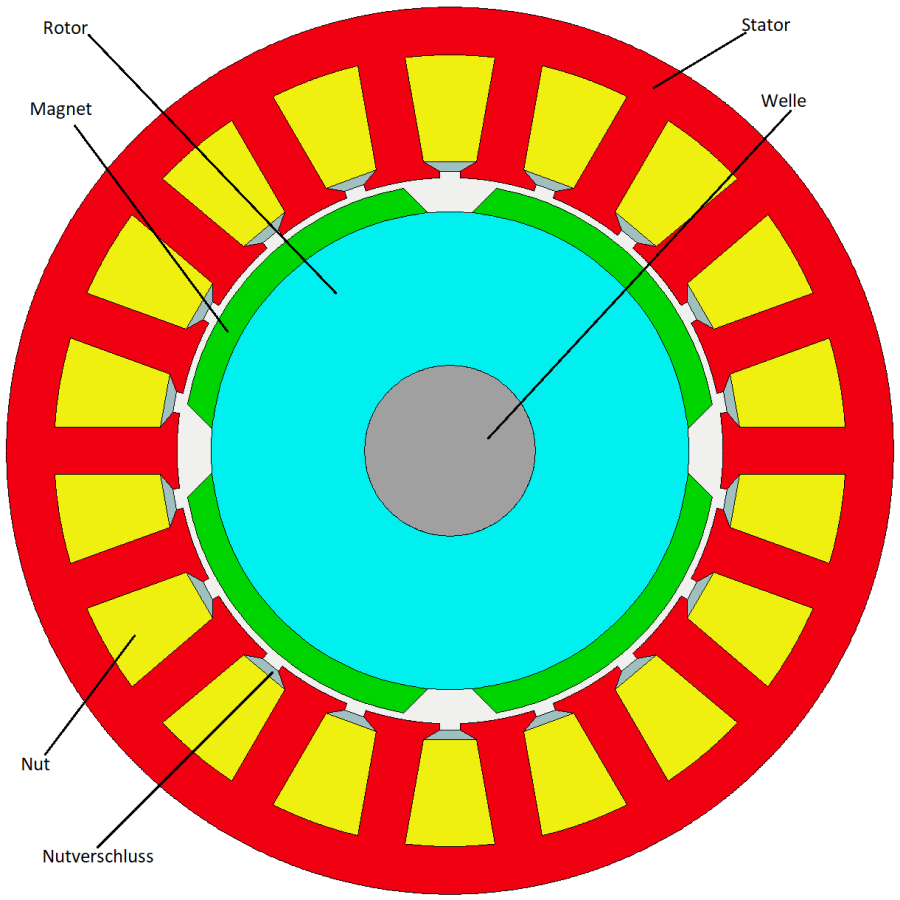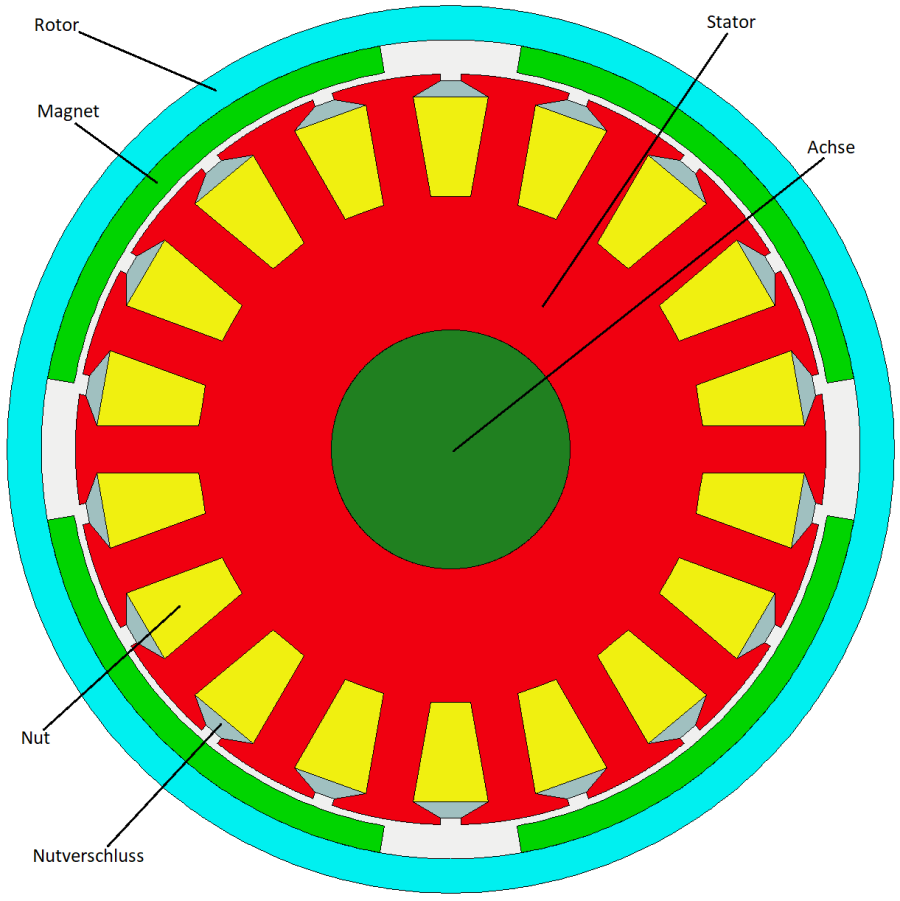How does a brushless motor work?
So-called brushless direct current (BLDC) motors are three-phase synchronous motors with permanent magnets. The rotary motion results from the fact that a rotary field is impressed in the stator windings, pulling the rotor, which is afflicted with magnets, along with it. Despite this, the BLDC motor must be operated with direct current via electronics. These electronics adjust the polarity of the coils accordingly, which means that commutation (unlike in a BDC motor) is purely electrical and no longer electromechanical. The electronics is an H-bridge, with two electrical switches (usually MOSFETs or IGBTs) each responsible for one phase.
In commutation, a distinction is made between block commutation, in which voltage blocks are always connected to the coils, and sinusoidal commutation, in which a sinusoidal voltage is applied to the coils. In order for electrical commutation to run smoothly, the rotor position must be fed back. In most cases, the rotor position is fed back via three Hall sensors, which must be electrically shifted 120° to each other. The advantage of Hall sensors is that they are very cost-effective and reliable. Due to the electrical commutation, the required installation space is smaller than with BDC motors and the efficiency increases. In addition, BLDC motors require very little maintenance because there are no carbon brushes to wear out.
What are the building types?
The BLDC motor comes in two designs, the internal rotor (see Figure 1) and the external rotor (see Figure 2).

How is an internal rotor constructed?
The BLDC motor is designed in two types, the internal rotor (see Figure 1) and the external rotor (see Figure 2). In the case of the internal rotor, the rotor is inside the stator, which means that the centrifugal force acts outwards on the magnets mounted in the rotor, against their attachment. In the external rotor, on the other hand, the rotor is mounted around the stator. Thus, the centrifugal force acts on the magnets in the direction of their attachment. This means that the magnets are pressed into the rotor. Depending on the application, a choice can be made between one of the two designs. At very high speeds, care must be taken with the internal rotor to ensure that the magnets do not detach from the rotor.
How does an external rotor work?
Torque motors are high-pole BLDC motors with a high power density. They have a high torque and are therefore often used as direct drives in the external rotor variant. The advantage here is that additional cooling is often not necessary, since the natural external rotation cools the motor. In addition, a gearbox can be dispensed with, which increases the overall efficiency.
